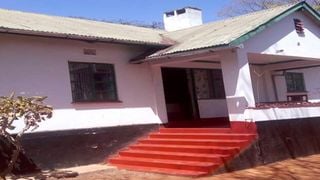
The Kenyatta House in Maralal, Samburu County.
| File | Nation Media GroupNews
Premium
The Maralal bungalow where Uhuru Kenyatta was conceived
What you need to know:
- The colonial-era bungalow, now under the National Museums of Kenya, played its fair bit in Kenya’s independence struggle.
- The visitors book was signed by President Uhuru Kenyatta on March 5, 2021 when he visited the house on a tour of Samburu County.
On a hilltop in Maralal, Samburu County, sits a building where Jomo Kenyatta stayed in the last days of his detention in 1961 as negotiations were underway on the terms of independence.
The colonial-era bungalow, now under the management of the National Museums of Kenya, played its fair bit in Kenya’s independence struggle.
History books say the Maralal Kenyatta House is the same place where President Uhuru Kenyatta was conceived.
The small building, once used by British colonial forces to torture detainees, serves as a reminder of what it used to be, but 80-year-old Muriithi Ndirangu does not need to be reminded.
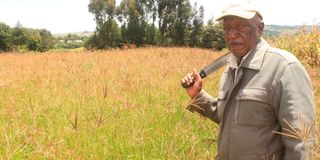
Muriithi Ndirangu, 80, a colonial era secretary at the Samburu District Health Centre (now Samburu County Referral Hospital) at his home in Laikipia County on October 19, 2021. He used to accompany doctors in their daily health check up on the late President Mzee Jomo Kenyatta at the Kenyatta House in Maralal town.
The weather-beaten building still stands decades on.
Mzee Ndirangu, who worked as a secretary in the office of the then medical superintendent in charge of Samburu District Health Centre, says Mzee Kenyatta lived in Maralal for about one and half years.
The future president had been transferred from Lodwar, where he and five other freedom fighters were detained in relation to the Mau Mau uprising.
Mzee Ndirangu says the Kenyatta family - Mama Ngina Kenyatta and the children - joined him.
He still remembers his life as a secretary - above all, how he used to accompany Dr Arnold Calvaro to the Kenyatta House for daily health checks.
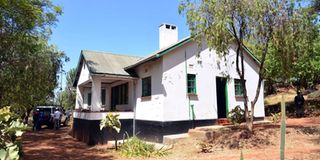
The Kenyatta House in Maralal Samburu County in this picture taken on August 15, 2015.
"Nobody was allowed to speak to Mzee Kenyatta. Everyone was banned and there were well-spelt consequences if one was spotted speaking or having a chat with him. I used the opportunity to accompany the doctor to Kenyatta's house," Mzee Ndirangu recounts.
Based on these reports, Mzee Ndirangu says the house stood out as a particularly sensitive and highly protected area.
He says their actions and movements in the Kenyatta House were closely monitored by security officers and informers.
According to Mzee Ndirangu, the colonial government’s fear was that if not kept in the dark about the conversations of other Mau Mau fighters, the remaining fighters and recently released Mau Mau detainees would form a separate movement, which would have been a potential threat to the colonial political order.
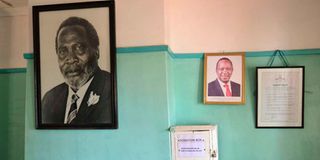
Portraits of Mzee Jomo Kenyatta and President Uhuru Kenyatta at the Kenyatta House in Maralal, Samburu County on August 15, 2015.
Mzee Ndirangu reveals that in Maralal, Jomo Kenyatta was allowed the freedom to walk to nearby shopping centres in the company of bodyguards, but he could not talk to anyone without permission.
"I do not know the reason Kenyatta was moved to Maralal and left other detainees in Lodwar. Although he was a prisoner, he enjoyed some freedom and could walk down to the shops in company of bodyguards under close watch. Nobody was allowed to speak to him," Mzee Ndirangu recounts.
Kenya’s founding father was finally released to his house in Kiambu the following year, according to Mzee Ndirangu. The then youthful secretary, however, never got a chance to see him again even after he ascended to power in 1964.
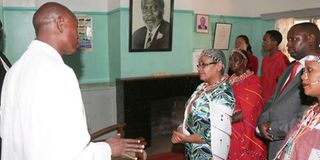
In this file picture, First Lady Margaret Kenyatta is taken on a tour of Kenyatta House in Maralal by the curator John Rigano Bulyar.
The three-bedroom bungalow, built in 1959, remains in Mzee Ndirangu memory. The house is located in a cool and serene environment in dusty Maralal.
The house also has a kitchen, a store, a washroom and a living room.
The visitors book was signed by President Uhuru Kenyatta on March 5, 2021 when he visited the house on a tour of Samburu County.
In the book, he wrote: “I was conceived in this house in 1961. It is a pleasure to be back using my own two feet.”





